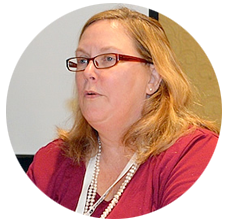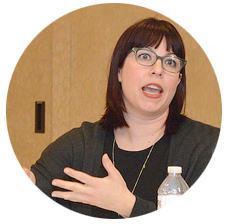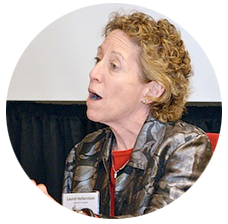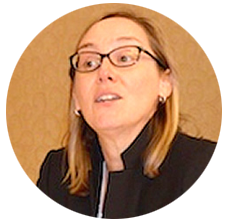By Bailey Knecht,
Bulletin Correspondent
Educating young journalists about responsibility in media literacy was a key theme of the panel discussion on “Trends and changes in journalism – How it will affect your newsroom” at the New England Newspaper and Press Association winter convention.
“I ask (my students) to spend a week tracking and analyzing everything that they consume in mass media,” said Amy Callahan, a professor and program coordinator of the Journalism/Communication Department at Northern Essex Community College, which has campuses in Haverhill and Lawrence, Mass.
“Coming out of it, most of them realize that consuming mass media has to be an active thing. So much of what they do is passive, and it’s coming at us, as we all know, in a saturated environment. I really try to hammer it into them that it has to be a very active activity that they do consciously.”
The panel included Callahan, who moderated the discussion; Melissa Zimdars, assistant professor of communication at Merrimack College in North Andover, Mass.; Monika Raesch, associate professor and department chair of communication and journalism at Suffolk University in Boston; Laurel Hellerstein, dean of the School of Communication at Endicott College in Beverly, Mass.; and Peggy Dillon, associate professor of communications at Salem (Mass.) State University.
Zimdars expanded on the idea of media literacy and gave examples on how she encourages her students to consume a wider range of material.
“The only answer that I have found that works is by convincing (students) that their media diet should never be one source,” Zimdars said. “Media literacy is about pointing to credible sources.”
The panelists also stressed the importance of differentiating in their classrooms between the concepts of communications and journalism, so students can recognize the difference in real life.
“(Public relations) is, in many ways, at odds with journalism, even though it uses the same set of skills, primarily,” Callahan said. “I do try to be conscientious about it, but I understand that it would be confusing for students … I think there’s something to having students be more educated, as long as we can make it clear that they’re not the same thing.”
Hellerstein said communications and journalism departments can coexist because they have some of the same goals.
“The focus we like to talk about is that we’re all about storytelling,” Hellerstein said. “It doesn’t matter if you’re a communications major or journalism or marketing.”
The panelists also touched on their goals of informing their journalism students about opportunities that exist in local, community journalism.
“(Journalism programs) should be working more closely with the local journalists,” Callahan said. “(Journalists) can also bring people in and make newsrooms more open.”
Another helpful tool for budding journalists is going out in the community and covering real events, according to the panelists.
Raesch gave the example of when her students covered the Boston Marathon bombings in 2013.
“It’s unpredictable,” she said. “But when these moments happen, they’re such good learning lessons, and I think those are the best moments to learn.”
The discussion ended on the issue of the importance of solid journalism during the current presidential administration.
“At a broader level, I’m just talking to my students a lot about the relationship between free press and democracy because, for some of them, it’s the first time they’re ever considered that,” Dillon said. “So that’s the level at which I discuss it, and what the potential outcomes could be if we don’t have a free press. It’s more than just the president criticizing the media. We talk about the consequences of all of it.”
The panel discussion, which took place Saturday, Feb. 25, was attended by about 25 people.
TEACHING

‘At a broader level, I’m just talking to my students a lot about the relationship between free press and decomcracy because, for some of them, it’s the first time they’re ever considered that. So that’s the level at which I discuss it, and what the potential outcomes could be if we don’t have a free press. It’s more than just the president criticizing the media. We talk about the consequences of all of it.’
—Peggy Dillon, Associate professor of communications,
Salem (Mass.) State University

‘The only answer that I have found that works is by convincing (students) that their media diet should never be one source. Media literacy is about pointing to credible sources.’
—Melissa Zimdars, Assistant professor of communication,
Merrimack College, North Andover, Mass.

‘The focus we like to talk about is that we’re all about storytelling. It doesn’t matter if you’re a communications major or journalism or marketing.’
—Laurel Hellerstein, Dean, School of Communication,
Endicott College, Beverly, Mass.

‘(Public relations) is, in many ways, at odds with journalism, even though it uses the same set of skills, primarily. I do try to be conscientious about it, but I understand that it would be confusing for students . . . I think there’s something to having students be more educated, as long as we can make it clear that they’re not the same thing.’
—Amy Callahan, Professor, program coordinator,
Journalism/Communication Department,
Northern Essex Community College,
Haverhill and Lawrence, Mass.

